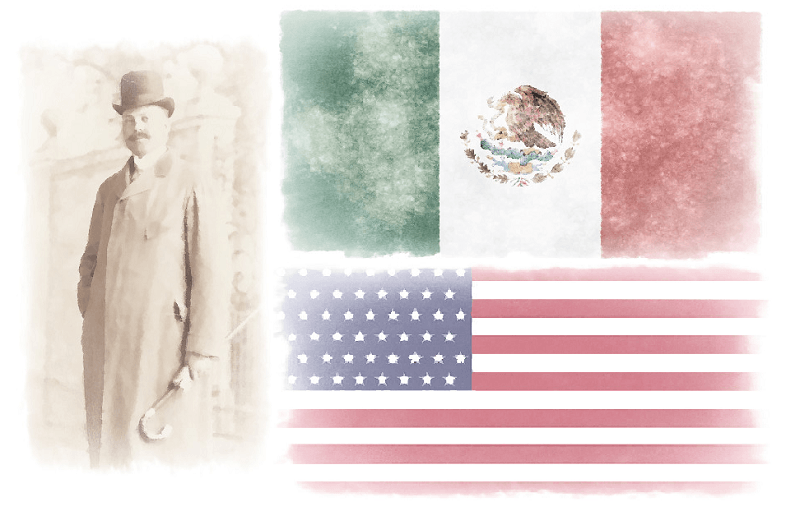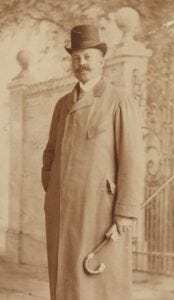When Mexicans Did Not Accept Americans to Settle in Mexico!

There was once a man who called himself – Guillermo Eliseo. A Mexican he said he was. And a very wealthy and rich one at that. He came over to US and bought a luxury apartment looking over the Central and had a successful Wall Street Office. In Mexico, he had many mines and haciendos. He was a member of the Metropolitan Museum of Art, American Geological Society, and Mexican Society of New York. He had also won the highest award from Ethiopia as he was single-handedly responsible for creating US-Ethiopian relationships.
Quite a feat for a Mexico, given how Donald Trump says Mexicans are really. Isn’t it?
When Mexicans Did Not to Accept Americans to Settle in Mexico! #Trump2016 Click To Tweet
But here is the rub. He wasn’t a Mexican. He was an American!
A slave son. Born to Charles and Margaret Nelson Ellis – slaves freed during emancipation, this light-skinned kid, who could speak many languages – specially Spanish – has a life story of a legend.
His real name: William Henry Ellis.
Being a Mexican gave him access to places, people and amenities that were never available to the African Americans. Assuming Mexican identity helped him get access to America that being an American – a Black one, albeit – could not get him ever!
During the late 19th century, a movement started spearheaded by this amazing human being – called Black Migration Scheme. The African-Americans – due to obvious discrimination – wanted to move to low-lying, underdeveloped parts of south and central Mexico—Veracruz, Oaxaca, Guerrero, Michoacán and San Luis Potosi.
This was a colony in Mexico that Ellis wanted to build for his erstwhile slave brethren.
Ironically, Ellis worked the Republican Party of those days to create the colonization of places in Mexico by the African Americans.
Ellis involved himself in African-American politics, particularly in Texas. During the 1880s and early 1890s, he allied himself with Norris Wright Cuney, Texas national committeeman of the Republican Party from 1886 to 1896 and an outspoken proponent of colonizing African Americans outside of the United States. Ellis also befriended Bishop Henry Turner, the chief proponent of the back-to-Africa movement in the post-Reconstruction era. These associations helped Ellis formulate his own ideas about African-American colonization. He advocated the idea that Latin America presented the ideal home for African Americans, because Mexico was much closer than Africa, and the Mexican north was similar to the southern United States in that both regions produced corn and cotton for international markets.
Towards this, Ellis went to Mexico City with letters of introduction from the Mexican consul in San Antonio to Mexico’s Secretary of Foreign Affairs, Ignacio Mariscal, and Secretary of Fomento (Public Works), Carlos Pacheco Villalobos and there he worked to get a 10 year contract to bring 20,000 African-Americans to Mexico. The contract said that every colonist will have a certificate of “morality, honesty and diligence”. But no mention was made of the race of the people.
He even met the Mexican President Porfirio Díaz to get the colony going. Unfortunately, the whole attempt was mired in controversy as press and people alleged that the facilities there – food, medicines and housing – was rank bad.
Ultimately, his work was a non-starter.
But in reality it was the racism in Mexico that hurt the whole plan the most.
In 1879, the intellectual Francisco Pimentel contended that the presence of blacks would “increase one of the ills our country suffers from, the heterogeneity of population.” The Mexican press echoed this stance, with commentators contending that, given the “natural differences” dividing the races and Mexico’s need to “improve its social, economic, and political status . . . the immigration that we need is that of the enterprising, robust, and civilized white race.”
As you can see, therefore, there was a time – interestingly – where an American could assume the identity of a Mexican and become more acceptable to people in this country. And, despite his best efforts and success in three countries (US, Mexico and Ethiopia), he could not make any headway to migrate Americans to Mexico. Because – Mexicans did NOT want the Americans!
How times change!






